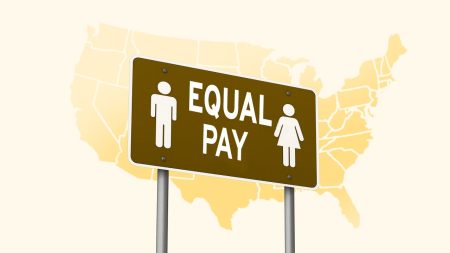Congratulations, you left that old job behind! Everything is in front of you now.
Well, except for that old 401(k). Don’t forget about that because that is your future, and you need to keep a close eye on it.
Unfortunately, bringing your 401(k) along isn’t as easy as cleaning out your desk.
The trouble with 401(k) rollovers
For millions of people who have switched jobs or retired, moving an old 401(k) or other company-sponsored retirement plan is a massive headache. Capitalize, a retirement savings platform, estimates that there are nearly 32 million old or forgotten 401(k) plans adding up to over $2 trillion.
For most workers and retirees today, the 401(k) is the lynchpin of a successful retirement nest egg, so why are so many accounts left behind?
Unfortunately, transferring 401(k) plans can be both difficult and confusing. As a financial advisor, I’ve completed hundreds of rollovers on behalf of clients — yet the process remains complex, even for me. Most of the difficulty stems from the fact that 401(k) plans still operate like it’s the 1900s.
Ye Olde 401(k)
- Over 80% of rollovers require a manual step like paperwork or a phone call
- Paper checks are still the most common option for transferring money
- Some plans still require notarized signatures
Navigating the rollover process
Rollovers are tricky and sometimes time-consuming. However, there are a few universal tidbits of info you’ll need to complete any rollover.
Rollovers always start with the account that currently has the money. Here are the three universal pieces of information your old 401(k) provider needs to move your money:
-
Who are they sending the money to
- This is the name of the receiving company or, if you are cashing it out, it’s you.
- Don’t play the go-between. If you’re transferring to a new account, have the check sent directly there. Avoid having the check addressed to yourself if possible so it can be sent directly to the new account in what is called a trustee-to-trustee transfer.
-
Where are they sending the money
- Provide an address with specifics including, if necessary, a P.O. Box or a department name.
-
Account number
- You are one of many aspiring retirees. Ensure your money makes it from your old account to your new account.
But first you need to make some decisions about where your money will head next. Here are the steps you should follow to make quick work of your rollover.
Review your current 401(k)
Take stock of how much money you have accumulated and what types of contributions you made. If you have only Traditional (pre-tax) or Roth (after-tax) contributions, your next steps will be simpler. If you have a mixture of both contribution types, you’ll have a few extra steps.
Choose a destination
Most people have four options for what to do with an old 401(k) plan, one of which is leaving it where it is. If you have chosen to move it, you need to decide among the following:
- Rollover the money into an individual retirement account (IRA)
- Rollover the money into your current employer’s 401(k)
- Withdraw or cash-out the 401(k) balance
Each of these choices have certain consequences that you should weigh before making a decision.
Rollover to an IRA
Rolling the money into an IRA gives you the most control over the money and how it will be invested. However, funding a traditional IRA may impact your ability to complete certain financial strategies like a Backdoor Roth contribution.
If you have both Traditional and Roth contributions in your old 401(k), you’ll need to open up one of each to transfer each respective contribution type to the appropriate IRA. Even if you made all your contributions to a Roth 401(k), your company’s matching contributions may be in the Traditional (pre-tax) category.
Rollover to your new 401(k)
If you like your new employer’s 401(k), this is a great option for keeping things simple. However, 401(k)s will have fewer investment options than IRAs and limit how you can access your money while employed. Not all 401(k)s offer Roth 401(k) options so if you have Roth contributions in your old plan, you may still need to move that portion to an IRA.
Speak with someone from your company or a representative of the custodian handling your new employer’s 401(k) to understand your options and how a rollover would impact your money.
Cash-out your 401(k) (and pay taxes)
Do you like taxes and penalties? Do you hate turning your money into more money? Then this is the option for you!
This is highly discouraged but remains a viable option. Regardless of your age, untaxed money will be taxed as ordinary income. Plus, if you’re under 59.5 years old, an additional 10% penalty will be applied for early withdrawal.
Don’t do this without thinking it through or having a firm understanding of the tax implications. There are exceptions to the early withdrawal penalty and select reasons where this path might make sense, such as emergency medical expenses, but those reasons aren’t common.
Rollovers are 10% paperwork and 90% perseverance
Now that you know what is inside your old 401(k) and where you want it to go, it’s time to get to work.
Tip #1: Delegate the tasks
The company in line to receive your money wants it. Don’t be afraid to ask them for help and make them work for it. They do this all the time and can help you make sure you have the right information and accounts, assist with navigating tricky paperwork questions, and most helpfully, many will even stay on the phone with you to tell your old 401(k) provider what to do.
Tip # 2: Send the money directly to the new account
I can’t say this strongly enough, do not take possession of the check if you can avoid it. There are some plans that will still mail it only to you. Even then, you can still avoid the worst pitfalls by having the check made payable to the receiving institution. Receiving the check in your own name creates a couple potential headaches:
- It puts more on your plate If you have the check you have to be responsible for depositing it to the new account. Ninety-five percent of the time this means you have to mail it. Do you have stamps? Time to go to the post office? Extra envelopes lying around? I sure don’t. Some large 401(k) providers might allow you to drop it at a branch office (assuming there’s one near you) or use their mobile app deposit, but don’t count on it.
- Puts you at risk of breaking the 60-Day rollover rule. If the check is made payable to you, the clock is ticking. You have 60 days to get that money back into a retirement account before it’s ineligible to be deposited to your chosen destination account, and you trigger taxes and penalties. The 60-Day Rollover process may also trigger tax withholding at the time of the distribution. If the check you receive has already subtracted taxes, you then have to make up the difference with your own money. If you don’t, the taxes withheld will be considered a taxable withdrawal.
Instead of receiving a check in your own name, what you want to complete is a trustee-to-trustee transfer, which means one company works directly with another while you stay out of it. This means the check will be payable to “Institution Name F.B.O. (for benefit of) Your Name.”
Tip # 3: Set recurring reminders
Use reminders to stay on top of the process. You don’t need to monitor it daily — it’s unfortunately a slow process — but you should check on the status of your rollover on a weekly basis.
Many companies display a kind of Domino’s Pizza Tracker of rollovers. If there is a status bar that isn’t progressing, don’t be afraid to have both your current company and the receiving company on speed dial for a week or two. One 10-minute phone call once a week is enough to catch any issues before they fester so you can get that money where it belongs.
Tip # 4: Put that money to work immediately
Every rollover, whether it arrives in a 401(k) or an IRA, needs to be invested. Don’t assume your existing portfolio will be applied to the new deposit. If you aren’t sure where to invest, do your research before it arrives. When that money is deposited (and you’ll know it when it is since you are following Tip # 3), get it invested into something immediately so that money can start working for you. The longer you wait, the easier it will be to forget. Don’t kick yourself a year from now because your rollover has been sitting in cash all this time instead of working for you in an investment.
Why we ask for feedback
Your feedback helps us improve our content and services. It takes less than a minute to
complete.
Your responses are anonymous and will only be used for improving our website.
Help us improve our content
Read the full article here












